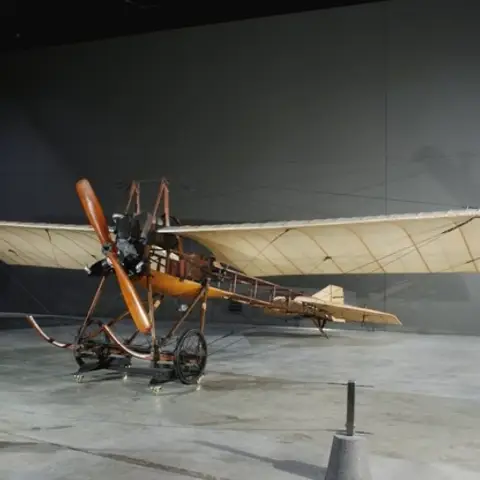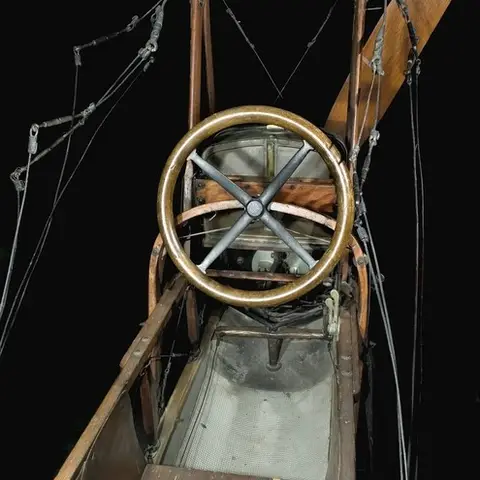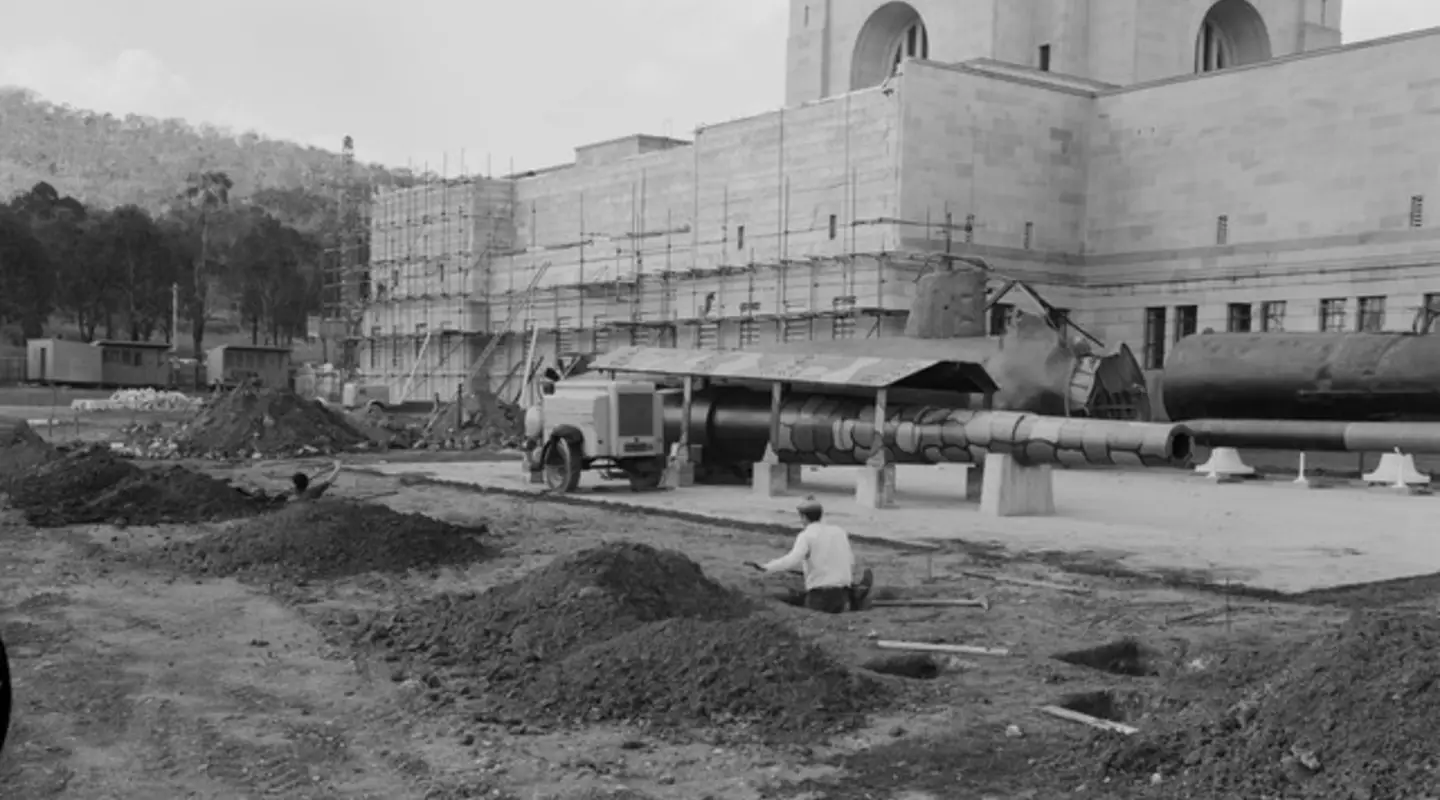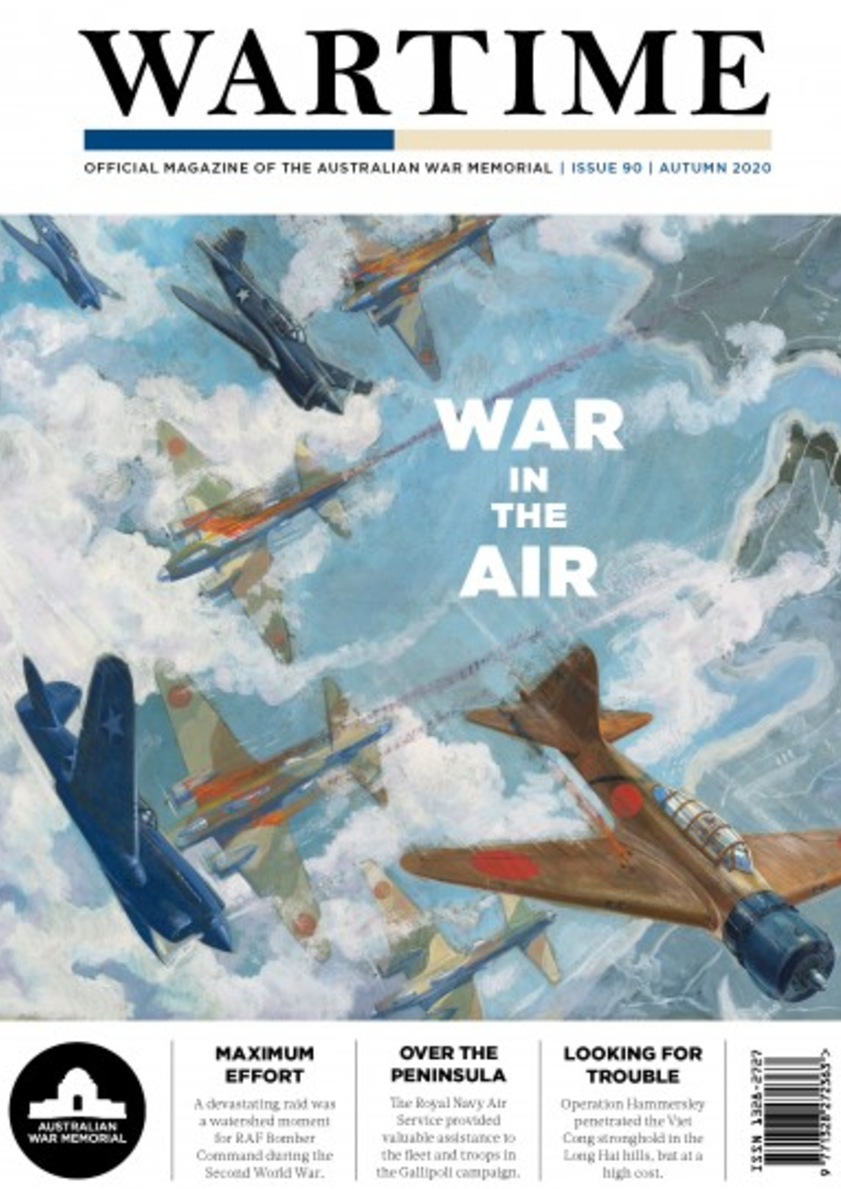By the time the Memorial opened in 1941 it was clear that it would already be too small to accommodate the expanding narrative of Australia’s role in international conflict.
Ernest Thain’s film Extensions to Australian War Memorial documents the construction of two new wings between 1968 and 1971.
The extensions would create the Memorial’s first public reading room, and new spaces for permanent exhibitions on the First and Second World Wars. There would also be a “quick-change” gallery for temporary exhibitions; administrative areas, workshops and collection storage areas; and a darkroom. Existing dioramas would be moved, new dioramas commissioned, and exhibitions in the existing galleries would be overhauled. An enormous mural (no longer on display), showing every aircraft used in the defence of Australia, was commissioned from Harold Freedman. Ernest Thain, the “Keeper of Film” at the Memorial (see Issue 86), documented the building extensions and gallery refit by shooting a bit of film every few weeks, and cutting it all together to create a documentary of two hours and 13 minutes.

Harold Freedman, Mural of Australian military aircraft, late 1939-1945 period, 1970. The mural took five years to complete and features every aircraft used by the RAAF up until the Vietnam War.
It shows the building work being done in a casual way unimaginable today. Workers (none of whom has been identified) build without safety harnesses or hardhats, and galleries are painted and refitted directly next to artworks that are neither covered nor removed from the walls.
At timecode 1:14:09 Harold Freedman is shown supervising the cutting of his mural into pieces with a builder’s saw so that the timber panels could be fitted to the curved wall of Aeroplane Hall. The mural would take Freedman five years to complete; it was so large that he had to build a new studio to undertake the commission. A panel is shown being brought into the partially-completed building (1:39:25) in a haphazard fashion that would shock art handlers today.
Extensions to Australian War Memorial
As part of the Memorial’s redevelopment, many of its iconic dioramas were repaired and refurbished. A diorama was commissioned for the new Vietnam galleries to show a cordon-and-search operation and the system of tunnels used by the Viet Cong in what was still a current conflict.
The diorama was built by a team led by Department of Army modeller Juanita Feltham, the first female artist to build a Memorial diorama. Her assistants are shown working on the model in their army uniforms (1:36:42). Other dioramas had new backdrops painted, and dioramas in disrepair were painstakingly restored to health.

Deperdussin taxi-type single seat training monoplane with 35hp Anzani Y-type three cylinder engine radial.

Deperdussin taxi-type single seat training monoplane with 35hp Anzani Y-type three cylinder engine radial.
New technology exhibits found space in the larger building. The film shows the Memorial’s CA5 Wirraway Mk II aircraft, with its wings temporarily removed, being craned from a storage shed at Duntroon and moved to the Memorial on a flatbed truck (1:42:01). The earliest military aircraft used by Australia, a Deperdussin, and the Second World War-era Messerschmitt Me262 jet fighter (REL/08385.001) can also be seen being brought to the Memorial.
The film can be accessed under the Memorial’s catalogue number F10167. It gives us a glimpse of the Memorial in the context of a Canberra that was more open, less developed, deservedly known as the “bush capital”.

